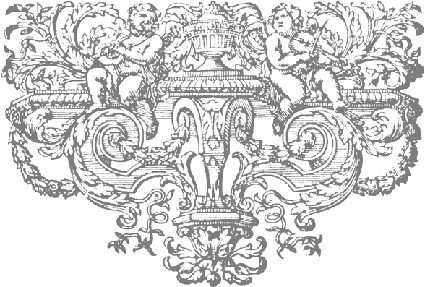A Franco-Flemish double-manual harpsichord,
made in Antwerp in 1617 and then
several stages by Jacques Barberini, Paris, c.1775, Nicolas Hoffmann, 1786.

Part of the preparations of the Putti in The Triumph of Love to ensure that they take their prize. This obviously includes a lot of target practice to make sure they are successful in getting their object!
Case decoration of vernis martin attributed to the Martin Brothers, Paris, c.1735
The image above shows the decoration after the varnish was removed, with the bentside/cheek joint at the far left. The 1786 ravalement join in the bentside is marked with a straight line indicated by the arrow.
Return to the important features of the Franco-Flemish harpsichord
Return to the main section on the history of the Franco-Flemish harpsichord
